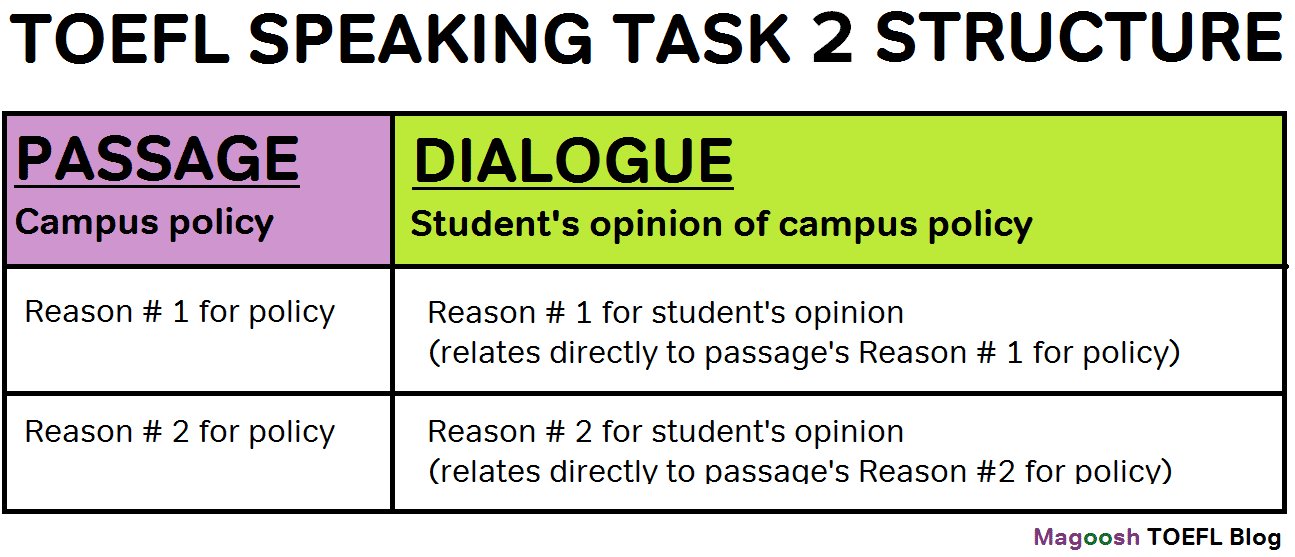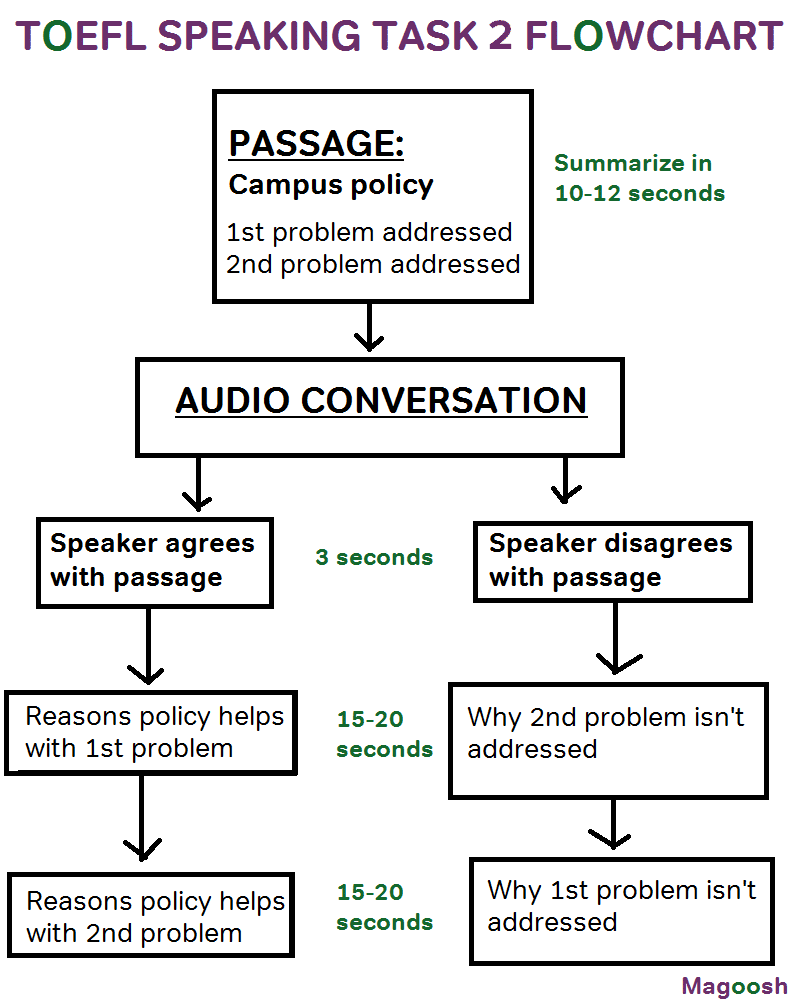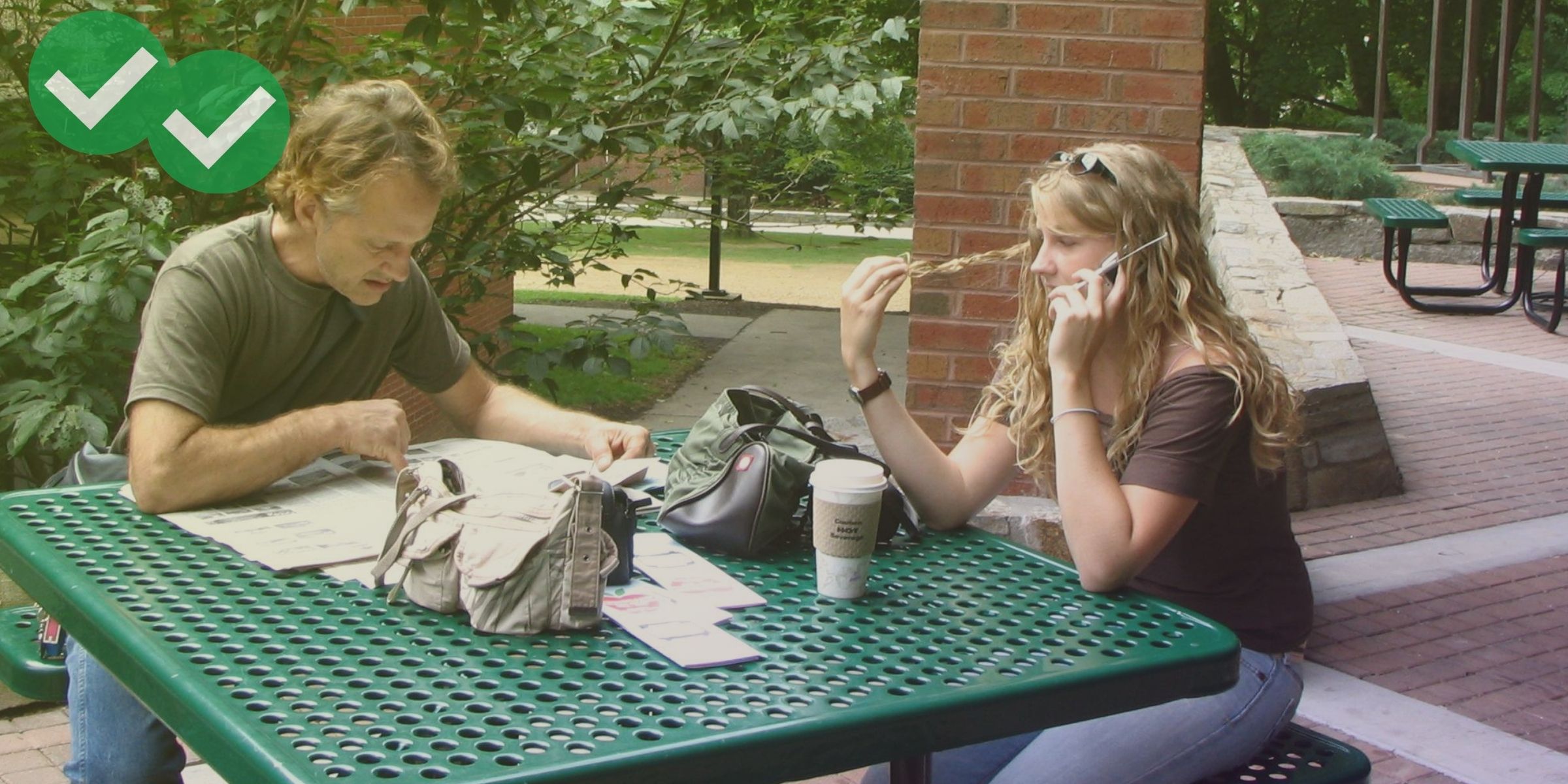
The TOEFL Speaking Task 2 prompt has two possible formats: the speaker may disagree with the reading, or they may agree.
This means the structure of your own response depends a lot on the content of the audio. I’ve already shown you two TOEFL Speaking Task 2 Templates. One of the TOEFL Speaking Task 2 templates is based on an outline, while the other TOEFL Speaking Task 2 template is based on a flowchart.
These two templates are flexible enough to cover either Task 2 format. However, if you’re really being cautious, you may want a template that covers the two possibilities separately. In this post, I’ll give you a third dual template that specifically addresses both possible formats of the task.
Reviewing the Structure of TOEFL Speaking Task 2
Before we look more at the two variations in this task, it’s a good idea to review the overall structure of TOEFL Speaking Task 2. Here is a table of the information that is covered in all TOEFL Speaking Task 2 prompts:

TOEFL Speaking Task 2 is All About Problems and Solutions
The table above can really help you prepare for both variations of the prompt. It’s a lot easier to prep for the two formats of Task 2 if you understand what they have in common. Whether the student agrees or disagrees with the policy proposed in the Task 2 reading, both the passage and the audio track are all about problems and solutions.
The campus policy described in the reading always addresses some kind of problem on campus. In fact, the policy will always address two problems. One problem will be discussed in Reason # 1 for the policy, and the other problem will be discussed in Reason # 2.
The opinionated speaker in the audio track also talks about problems and solutions. Suppose the speaker disagrees with the argument in the passage. (This is the most common format for the task.) In that case, the speaker will explain why the policy in the passage isn’t a good solution to the problems in question. Usually, they will also propose alternative solutions to the two problems mentioned in the passage.
On the other hand, if the speaker agrees with the passage, he or she will give additional reasons that the policy will solve problems on campus. This is actually the simpler of the two arguments the speaker can make in the listening portion of Task 2. It would be nice if the TOEFL could make agreeing with the passage their more common standard, actually!
TOEFL Speaking Task 2: Dual Flowchart
Either way, the TOEFL Speaking Task 2 template below has you covered! (I’m presenting it in flowchart form.)

How to Use This TOEFL Speaking Task 2 Dual Template
Use this template to practice making two separate outlines for your Speaking Task 2. Any Speaking Task 2 response will only include one of the two “branches” underneath the “audio conversation” field in this chart.
Also pay attention to the time estimates in the chart. I deliberately gave recommended times that will leave you with between 5 and 15 seconds left over if you perfectly follow them. It’s best to “undershoot” for time, so you have some extra seconds to restate and clarify things. If you still have time left over at the end, you can always add a concluding sentence where you restate the speaker’s main thesis.






Leave a Reply